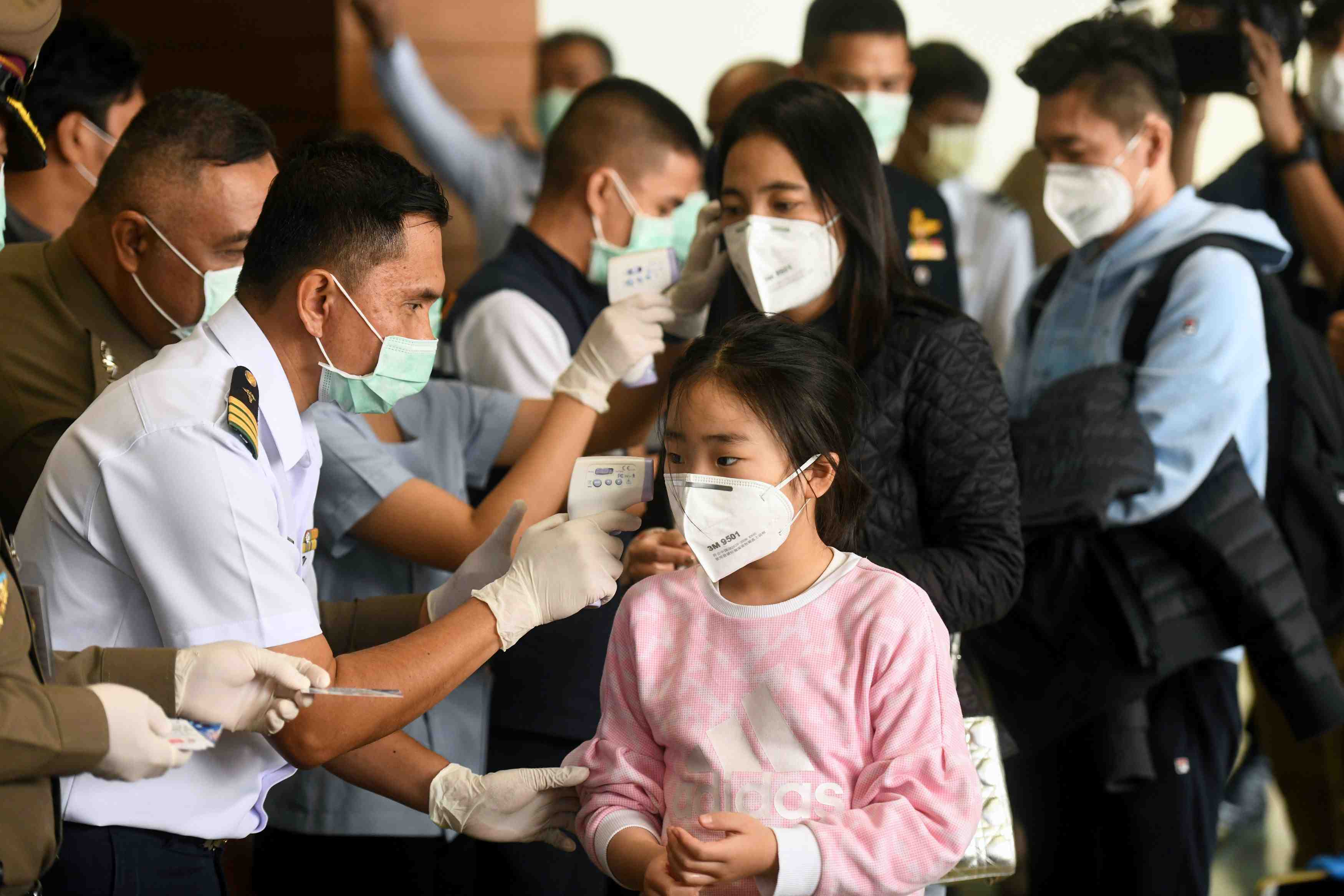Coronavirus
Residence Track: Checklist for Japan Travel During COVID-19
Published
3 years agoon

In this second of two installments, we will discuss the Residence Track immigration scheme.
Japan is relaxing travel restrictions further for Japanese residents and foreigners with resident status in Japan who, until now, had to jump through several hoops to re-enter the country. Changes to requirements as well as new options have been added since October 30.
READ the first installment: Checklist for Business Track.
The steps below are ones you are required to take before leaving Japan, during your stay in the host country, and upon returning to Japan.
Background
On October 30, nine countries and regions were promoted to advisory level 2, which means they are no longer on Japan’s travel ban list. When coming from these countries and regions, PCR tests 72 hours before boarding a flight and upon arrival in Japan are no longer necessary:
- Australia
- Brunei
- China (including Hong Kong and Macau)
- New Zealand
- Republic of Korea
- Singapore
- Taiwan
- Thailand
- Vietnam
Note that the information might differ slightly between countries in the same category, and depending on which direction you fly (to or from Japan). Make sure to check the relevant embassies for detailed information. In addition, airlines have their own requirements travelers might need to satisfy before boarding a flight.
Residence Track
Countries Covered: Vietnam, Thailand, Malaysia, Taiwan, Cambodia, Laos, Myanmar, Singapore, Brunei, Republic of Korea
This covers individual travelers as well as those belonging to foreign companies or organizations based in Japan, as long as they can guarantee appropriate measures.
Who is eligible:
- All Japanese and foreigners with resident status in Japan, or expatriates who have long-term visas to work in other countries
- Those working in a range of sectors, including nursing, academia, international business, religion, media, medical field
- Foreign nationals who hold a written pledge from a company in Japan vouching for them
- Spouses or family members of a Japanese, or spouses or family members of a permanent resident, can apply to use this track even without a pledge from a company in Japan.
Note that norms change slightly between Japanese and foreigners.
Conditions:
- For Japan residents traveling to a Residence Track country:
Before boarding a flight to a host country, you must have:
- A valid negative PCR test performed within 72 hours of boarding your flight
Note that some countries require specific information (e.g., an English translation). One can book a PCR test at a site of your choosing. One option to find testing sites is the TeCOT website.
Upon arriving in the host country:
- Quarantine for two weeks should it be required by the norms in your host country.
Before flying back to Japan:
- Monitor your health for 14 days prior to returning to Japan
Upon arrival at the airport, submit:
- “Health Condition report” questionnaire providing health details while you traveled
Upon entering Japan:
- From a level three country: You are required to take a PCR test at the airport upon arrival.
- From a level two country: For a trip of less than seven days, travelers can go straight home.
Quarantine: Two-week quarantine upon entering the country for all travelers
Japanese Nationals: Prepare These Documents
- A certificate of a valid negative PCR test taken in the host country 72 hours before the flight to Japan, unless you fall into one of the exceptions. If your travels are less than seven days, a PCR test upon return booked through TeCOT is possible, for example.
- “Health Condition Report” - A sample can be found here in Japanese, and here in English.
2. Foreigners with residence status in Japan:
Before entering Japan:
- Monitor your health for 14 days prior to returning to Japan.
- Have a valid negative PCR test performed within 72 hours of boarding your flight back to Japan.
This is required even if the country where you are coming from is on advisory level two.
Should the trip be shorter than seven days, travelers are allowed to take the PCR test after returning to Japan at their own expense using, for example, TeCOT, the website for PCR booking set up by the Ministry of Economy, Trade and Industry.
Upon arrival at the airport, submit:
- “Health Condition report” questionnaire providing health details while you traveled
- “Written Pledge” by your company justifying your travel abroad (unless entering as the spouse of a Japanese national)
Upon entering Japan:
- From a level three country: You are required to take a PCR test at the airport upon arrival.
- From a level two country: For a trip of less than seven days, travelers can go straight home. If the traveler hasn’t taken a PCR test before leaving the host country, he or she needs to do it in Japan, using, for example, TeCOT to book an appointment, and stay at home until they receive a negative result.
Quarantine: Two-week quarantine upon entering the country for all travelers
Conditions: During the first two weeks after entering Japan, travelers need to refrain from taking public transport, limit interaction with others to a minimum, stick to the submitted schedule, collaborate with company health follow-ups, download LINE for health questionnaires and COCOA (the contact tracing app), and keep GPS information.
Take away: Although it’s formally known as a “Residence Track,” this immigration scheme has a lot of overlaps in aim and practice with the Business Track. However, the Residence Track is applicable to more countries. It has fewer requirements, especially for Japanese citizens, and therefore allows more flexibility for the traveler.
Non-Japanese: Prepare These Documents
- “Health Condition Report” - A sample can be found here in Japanese, and here in English.
- “Written Pledge” - Form for regular business track travel is here; for short business trips, here.
- A certificate of a valid negative PCR test taken in the host country 72 hours before the flight to Japan if necessary.
- “Schedule of Activities in Japan” - Form can be downloaded here.
- Information specifying where you will spend your quarantine - downloadable form here in Japanese, and here in English
- Proof of valid health insurance in Japan, and one that covers you if necessary while abroad.
You should have a smartphone to download two apps: LINE (for the health questionnaire from the Ministry of Health) and COCOA, the contact tracing app. You must preserve the phone’s GPS information for 14 days.
The Bottom Line
After having looked at the requirements for new travel schemes in Japan — whether your travel is Business Track or Residence Track — what conclusions can we draw?
Although some of the new norms are designed to encourage business travel, there are several hoops that businesses and individuals need to jump through to smoothly have employees move from one country to another.
One hurdle appears to be the PCR testing, which by and large is still expensive in Japan.
In addition, although the Business Track does allow travelers to forego certain requirements (like the quarantine and second PCR test upon re-entry into Japan), it still imposes a burden on businesses to take responsibility for their employees’ health upon return to Japan.
For foreigners with resident status in Japan, all three routes require a written pledge by the company to justify travel, unless the traveler is resident in Japan or the spouse of a Japanese national.
When JAPAN Forward asked for a comment on the possible high hurdles for businesses, Seiji Matano, the Attorney Deputy Director of Immigration Department, explained:
Together with restoring the international exchange of people in and out of the country, we need to take precautions to avoid the rise of [COVID-19] infections inside Japan. In order to achieve that, we think that it’s necessary to apply further infection prevention measures (such as 2-week quarantine, PCR tests and written pledges by companies).
There are signs that travel might become easier over the next few months, as Japan is currently in the process of negotiating the introduction of the Business Track and Residence Track with Australia, New Zealand, China, Hong Kong, Macau, and Mongolia, according to Mr. Matano.
At this time, there is no readily available data on how many companies have made use of this scheme, and only time will tell if business travel will become easier with practice and the additional relaxing of norms.
We will be following different aspects related to this story, including how to take a PCR test in Japan, so make sure to follow us on JAPAN Forward to learn more.
Author: Arielle Busetto
You may like
-


Kabuki Comes to Hawaii: Serendipitous Ties Between a University and Professional Actor
-


SusHi Tech Tokyo 2024 Peers Into a Vision for Sustainable Cities of the Future
-


EDITORIAL | Trilateral Defense an Apt Response to China's Sea Aggression
-


Prime Minister Kishida Carries Strong Message of Unity to Washington
-


Taiwan Relations Act at 45: Where's Japan's Version?
-


EDITORIAL | Latest Hong Kong Security Law Elevates Risks for Visitors and Foreign Residents
















You must be logged in to post a comment Login